Veterinary / What we do
At the track
As vets, we check all dogs pre-race to assess their fitness to race. We observe their performance during races looking for signs of fatigue, stress or injuries, and we conduct post-race examinations and treat injuries and advise on appropriate rest and rehabilitation times for injured dogs.
We attend to serious injuries, stabilising injuries and providing essential pain relief prior to referral or, where the greyhound's best interests dictate it, humane euthanasia.
We monitor sample collection procedures and ensure that our sport is conducted free of prohibited substances and as a fair playing field for all.
Compliance
Where the rules are breached, we provide expert opinions in the disciplinary process to ensure that any disciplinary action is scientifically justified and of the correct magnitude to match the compromise in welfare that may have occurred.
We are informed by the legislation of the Greyhound Racing Act 2017; and the functions of the Animal Welfare Committee which is established based on legislative requirements to develop a Code of Practice for the Health and Welfare of Greyhounds. This code of practice will dictate the standards that apply for all greyhounds throughout their lifecycle and will be enforceable
Industry education
We are dedicated to continuing education of participants in this industry in order to improve standards of care for greyhounds. The Australian Working Dog Alliance conducted an enormous industry survey in 2015 and the outcomes suggested a strong focus on establishing structured education programs for participants on training methods and positive reinforcement, much of which is already paying dividends in other working dogs like the military dogs, guide dogs and police dogs.
Policy
Designing policies based on science and evidence will equip us to provide the best possible welfare outcomes for all greyhounds.
Collaboration
We collaborate with the other states and other Animal Welfare bodies with information and intelligence sharing and cross functioning of our regulatory capabilities. The idea is to provide harmonisation and an industry that sets uniform standards that are very similar across borders as it is well known that participants and dogs travel frequently and compete in other jurisdictions.
We sit on committees and joint panels at the GA level and meet to discuss testing thresholds, policies and welfare issues broadly affecting the industry as a whole.
Research
Research demonstrates what we know: that happy, healthy dog’s with sound temperaments make the best athletes; have longer racing careers and a greater chance of finding a post racing home. This is our primary aim as vets in this industry.
We will continue collaboration with research organisations and tertiary institutions like UTS: who have done considerable research on track design, safety and racing injuries. There is not much research out there that has been formally completed in Greyhounds. Some research is currently underway on chase motivation in greyhounds, an important behaviour that we need to understand so that we can develop the best possible training and racing conditions for them.
